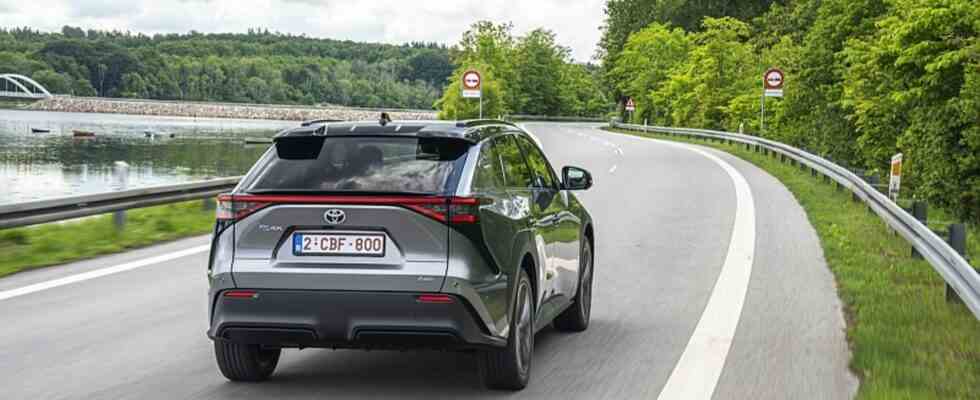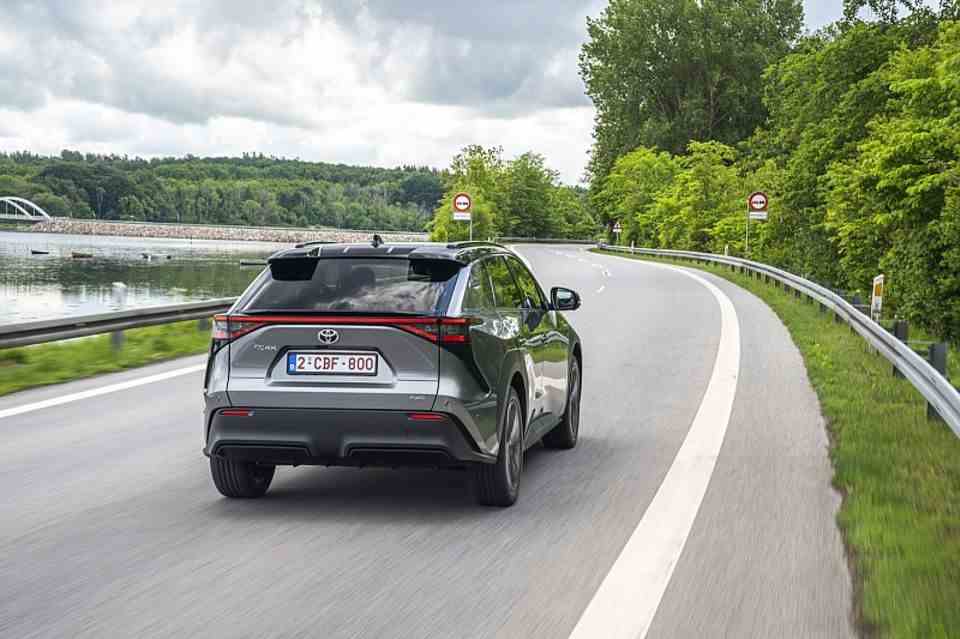driving report
time to catch up
Toyota bZ4x
© press-inform – the press office
For more than two decades, Toyota has relied on the efficient hybrid drive more than any other car manufacturer. But now, like the competition, it’s high time to switch to electric drives. The Toyota bZ4x not only surprises with its confused name.
Until recently, Toyota has been looking at electric cars alone, more firmly than ever on its hybrids. But the global crusade against emissions has gained significant momentum in recent years – nothing works without all-electric vehicles. The electric mid-size crossover bZ4x is just the first of 30 zero-emission Toyota models to be rolled out to customers by 2030. Market launch in Europe: next month July 2022. The 4.69 meter long SUV is the first vehicle based on the new e-TNGA architecture in which the Japanese have high hopes in the competitive SUV segment. Its odd designation is made up of the initials of the Beyond Zero motto (bZ), the number 4 (vehicle size similar to the RAV4) and the letter X, referring to the crossover body. Its main competitors are the VW ID. 4 / Skoda Enyaq, Kia EV6 / Hyundai Ioniq 5 or a Ford Mustang Mach-E. The entry-level price is 47,490 euros, which is pushed up by a further 3,000 euros thanks to the sensible all-wheel drive option.
The drive portfolio is unusually narrow because, unlike most of the competition, there is only one battery size of 71.4 kWh and versions with front or all-wheel drive: the former uses a front engine with 150 kW / 204 hp / 266 Nm, the latter combines two engines with just 109 hp on both axles, which ensures a maximum output of comparatively manageable 160 kW / 218 hp / 337 Nm. The start of the over 2.1 ton all-wheel drive vehicle is brisk, although not impressive, but definitely sufficient in this league. The standard consumption of 15.4 to 18.1 kWh/100 kilometers is below that of most competitors, resulting in a range of 486 to 516 km for the front-wheel drive car and 411 to 470 km for the all-wheel drive version. The interior is air-conditioned using a heat pump to save energy, but the charger on board will only work in one phase at the start of sales with an output of just 6.6 kilowatts. The 11 kW three-phase charger should be available towards the end of the year. Refueling at the fast charging station is only possible up to 150 kilowatts.
Contrary to general practice, the maximum speed of 160 km/h in Eco mode is not limited, although this measure could have a positive effect on the range. The battery is an elementary part of the new electric platform, which makes it particularly rigid and flexible at the same time. As with many of its competitors, the chassis seems stiffer than many Toyota models with internal combustion engines, even if the rear axle suspension comes from the well-known RAV4. The all-wheel drive Toyota bZ4x with its various driving modes can also convince when driving over gravel or even in deep mud. The ground clearance of 21 centimeters is the only limit here and the wading depth is half a meter. The body’s lateral movements are very well controlled without compromising comfort on rough roads, and there is no annoying forward pitching under braking either. The small steering wheel feels good in the hand, offers good feedback from the road and you quickly get used to the missing shift pedals for brake recuperation. For next year, Toyota plans to introduce a steer-by-wire system for the bZ4x, with no physical connection between the steering and wheels, promising faster and more direct response, plus a maximum turning angle of 150 degrees.
In the interior, the 2.85 meter long wheelbase is particularly appealing because of the space in the second row. Two, or three people if necessary, can sit comfortably here, since there is no cardan tunnel to limit the space available. You sit slightly higher due to the battery pack in the underbody, but there is more than enough headroom for people up to 1.90 meters tall. Toyota preferred legroom to luggage space when designing it, because the trunk volume is 452 liters; significantly less than the RAV4’s 520-580 liters, but also less than most other EV-SUV competitors, such as the Mustang Mach-E (502 liters) or the Skoda Enyaq (585 liters). The panoramic roof fills the interior with sunlight and in a few months the bZ4x can be equipped with a solar roof that converts sunlight into energy. In this way, ancillary units or the battery are supplied with additional energy when the vehicle is stationary, which should bring an additional range of up to 1800 kilometers per year.
In the driver’s seat is a small seven-inch instrument panel above the tiny steering wheel and the combination of these elements is reminiscent of Peugeot’s quirky cockpit concept, in which the instrument panel is designed to double as a head-up display. The problem for some drivers is that the upper rim of the steering wheel obscures some of the information, forcing them to move away from their preferred driving position. The central 12.3-inch infotainment is better, which compared to current Toyota vehicles shows better graphics and allows for more intuitive operation. However, the driver has to get used to the different display levels again and again and it remains to be seen how the hard plastic materials in the interior will present themselves after a few years. They don’t look valuable.


